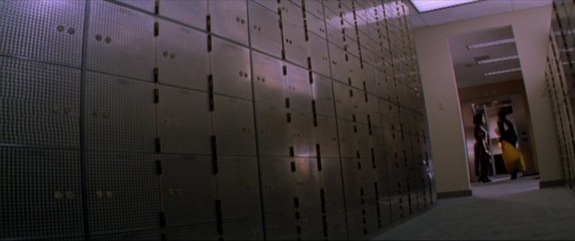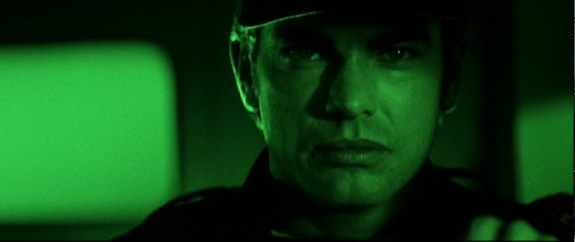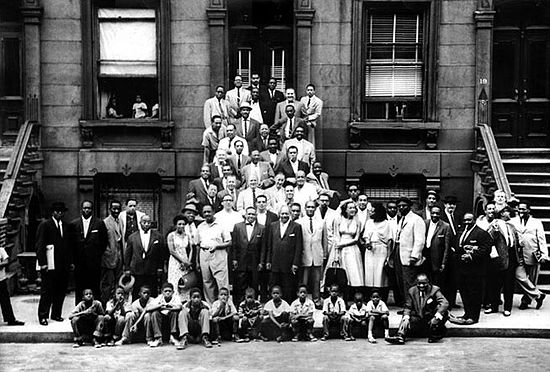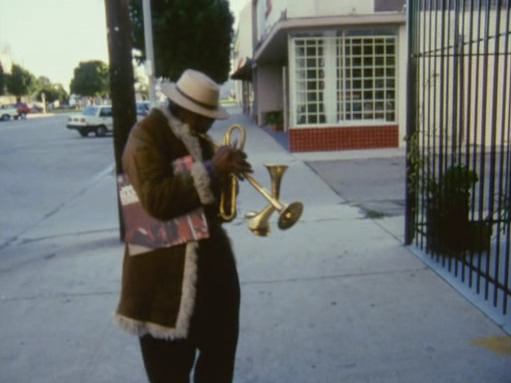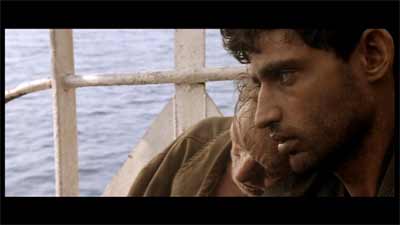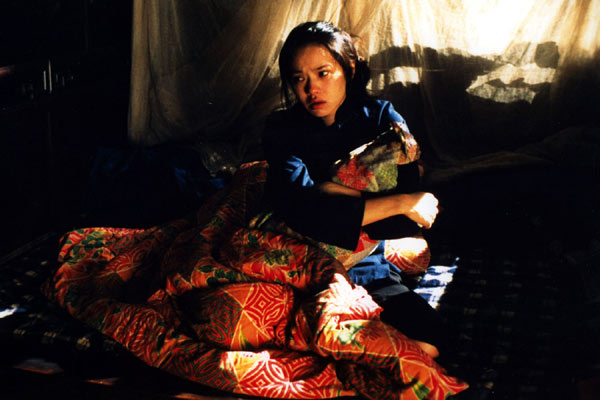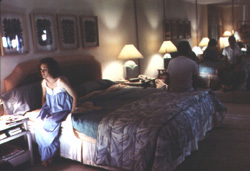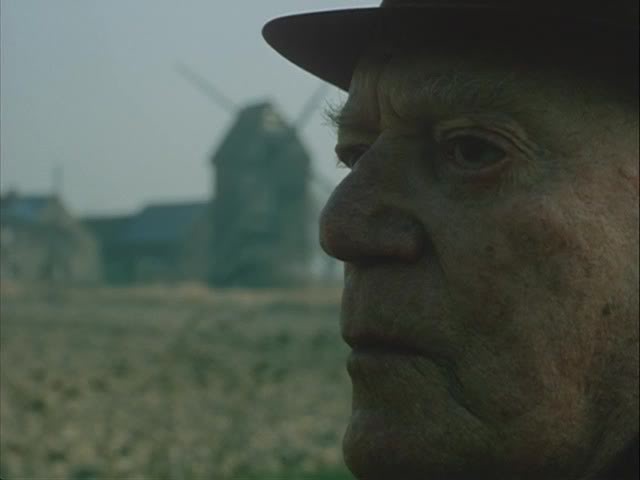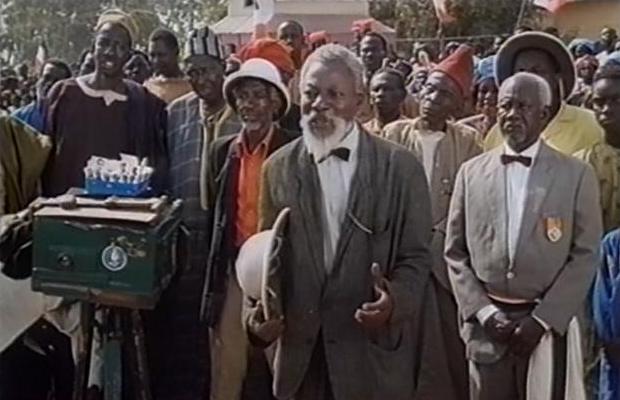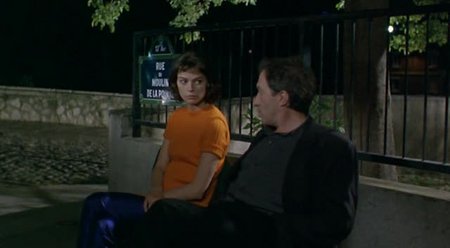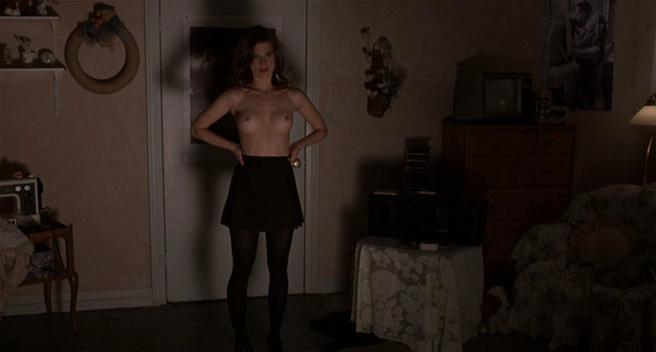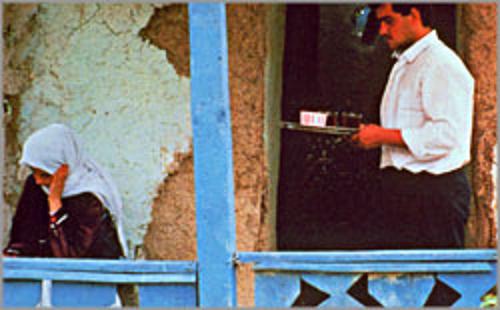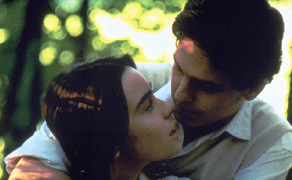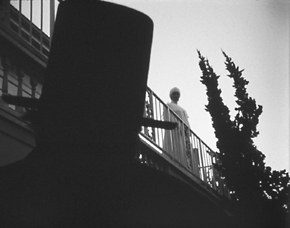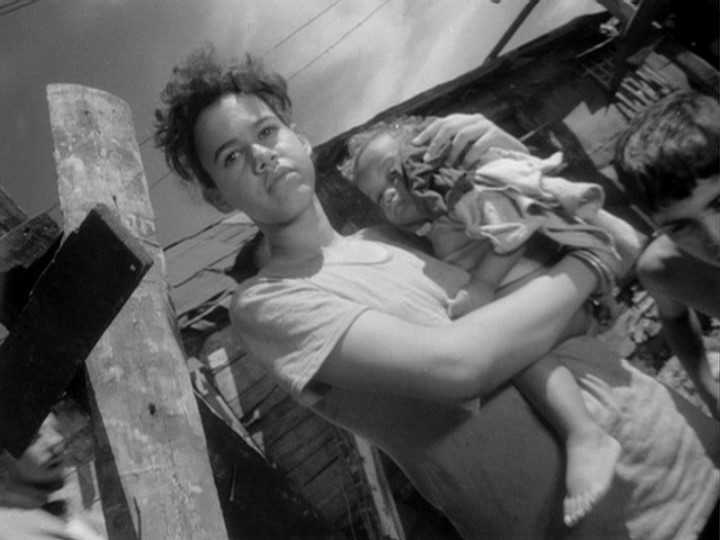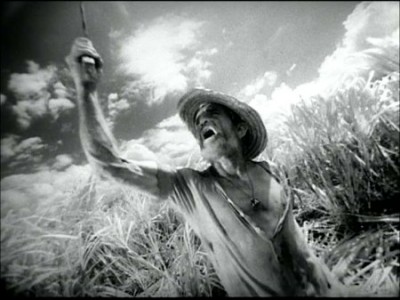From the Chicago Reader (January 5, 1996). — J.R.
I can’t recall a worse year for Hollywood than 1995. This suggests that either my memory or the studio system is disintegrating. My guess is it’s the latter. I don’t mean to say the business is coming apart; sadly, Hollywood has often found it easy to make money with junk, especially if the public is willing — as it still apparently is — to go along with the film industry’s manipulations. (However, given the scant means available to most people to make themselves heard on such matters in this “free” society, I don’t want to jump to too many conclusions about this.) Rather I believe that what’s coming apart is the social contract between the industry and filmgoers, which allows some form of customer satisfaction that isn’t predicated on deception and a fundamental contempt for the audience.
A symptom of the problem could be found in an article by Peter Bart in Variety late last October bemoaning the poor box-office returns for “such pricy projects” as Jade, The Scarlet Letter, Strange Days, and Assassins. “Rubbing salt into the wound,” added Bart, “is a new Yankelovich opinion survey…which indicates that 43 percent of filmgoers interviewed say they would attend more films all year round if a ‘better selection’ of movies were available.
“Nobody knows precisely what ‘better selection’ means,” Bart wrote. I beg to differ. I think most people would define a “better selection” as movies that don’t express the kind of egregious contempt for their intelligence and humanity that Bart’s list of films does. Of course the possibility of arriving at such a conclusion in a sycophantic industry publication like Variety is remote. Bart lists three other conclusions the studios seem to have drawn: (1) they should focus on superstar vehicles, (2) they should focus on “edgy” pictures costing less than $20 million in which writers and directors matter more than actors, and (3) they should focus on mid-range projects costing between $20 million and $40 million that have stars but not superstars.
Calling for movies that don’t insult the audience obviously wasn’t even thought worth mentioning, and for a good reason. The operative, if unspoken, theory behind all three of the stratagems outlined is that audiences can be insulted from now to doomsday as long as the pictures are promoted correctly and widely enough — self-fulfilling prophecy at work. So there was no reason to conclude that The Scarlet Letter failed because audiences knew it was a ridiculous piece of tripe; the problem was simply that the promotional machinery faltered.
Indeed, the promotional machinery behind Steven Soderbergh’s The Underneath — stylistically the most adventurous studio release of the year — faltered so badly that Universal didn’t even bother to include the movie in the batch of letterboxed videos it sent me and other members of the National Society of Film Critics in December. The fact that I and several colleagues liked The Underneath a lot more than Apollo 13, Casper, Clockers, How to Make an American Quilt, To Wong Foo, Thanks for Everything! Julie Newmar, and Waterworld — among the films Universal did send us copies of — was apparently irrelevant. I heard that Universal also refused to release The Underneath overseas, where I daresay even more people would have liked it. (Hubert Niogret, who caught it at a private screening in Paris, writes about it enthusiastically in the December Positif.) Also, the chances of The Underneath coming out on video in a letterboxed format — the only way its visual distinction could survive — are just about nil. But who ever said a studio’s profits depend on the pleasure and edification of its customers? The issue really isn’t whether people get to see something they might like, but whether the egos of marketing executives are gratified. Apparently they feel they failed in promoting The Underneath, so they’d prefer if we all pretended it never existed.
I hope I’ll be forgiven for eliminating all studio pictures from my ten-best list. This isn’t hard to do because four of the serious contenders — The Bridges of Madison County, Dolores Claiborne, Se7en, and Nobody’s Fool — were more than adequately publicized, were seen by just about everybody who wanted to see them, and are not appreciably better than the titles on my list, most of which were underexposed. The only other serious contenders were Arizona Dream, Emir Kusturica’s cockeyed view of America (which received its U.S. premiere at the Film Center in January, long before the cut version turned up on cable — another victim of studio mishandling, by Warners), In the Mouth of Madness, John Carpenter’s scary venture into Stephen King and David Lynch territory; Carl Franklin’s juicy and instructive adaptation of a Walter Mosley period mystery, Devil in a Blue Dress; and Soderbergh’s The Underneath, a brilliant if flawed remake of the noir thriller Criss Cross — a picture I’m eliminating for the same reason so many of my colleagues are eliminating it: to keep the marketing people at Universal happy. I hope they’re properly grateful.
For readers who want to know why I didn’t include Leaving Las Vegas, a film recently voted the best of the year by the New York Film Critics Circle, let me refer them to James Wood’s excellent broadside — on the last page of the December 25 issue of the New Republic — on the phoniness of the movie and the foolishness of several New York critics. Some of what Wood has to say about Leaving Las Vegas, incidentally, could also be applied to Se7en — a puritanical indictment of puritanism that also, as Wood puts it, “swaddles degradation in fall colors.” Younger viewers who want to consider themselves hip seem to cling to such movies as proof of their clear-eyed cynicism, but the glamorous nimbus encircling the alleged hopelessness of both movies gives the lie to their supposed realism.
A touching, if also worrying, aspect of some end-of-the-year features — most notably The American President and Sabrina — is a desire to cater to the romantic securities of 40 years ago, a back-to-the-womb impulse that lauds the good-heartedness of the president and the no less patriarchal sweetness of the ultrarich. Unfortunately, to sustain this feeling The American President had to dream up a White House where Hillary was safely dead, and Sabrina had to make its working-class heroine a millionaire in her own right before she could sleep in her employer’s bed. Nixon, which doesn’t have enough clout or polish to be an example of the old Hollywood magic at work, puts across the same pious, expedient hypocrisy as Clinton’s funeral oration, but more successfully, to judge from many of the reviews.
For critics like me who attend a lot of festivals, it wasn’t such a bad year for movies, but that’s because there’s often as much as a year’s delay between a festival screening and a U.S. commercial opening of a nonstudio picture — also a problem with some TV documentaries. This isn’t necessarily true in other parts of the world. Though I missed the three-part A Personal Journey With Martin Scorsese Through American Movies, produced by the British Film Institute, at Cannes in May, I caught most of it on TV in Paris a few days later. It was screened on England’s Channel Four around the same time, and a friend encountered it on Hong Kong television in July. But it still hasn’t premiered on American TV, which isn’t surprising. (I’ve been told that we won’t see Jim Jarmusch’s remarkable and disturbing western Dead Man, also shown at Cannes, before May 1996.)
To put it simply, the U.S. is a third-world backwater when it comes to the opening of most foreign and independent pictures. This state of affairs seems to suit most of the industry flacks — giving the studios first dibs on what we see and ensuring that most mainstream publications will treat studio product as the best stuff around, regardless of how awful it is — and it isn’t likely to change unless people drastically revise their moviegoing habits. In other words, a fundamental lack of respect for the American public is now being factored into the basic policy decisions of the studios and their yes-people — a lack of respect that can be traced through film production, distribution, promotion, exhibition, and most reviewing.
My favorite movies of 1995 weren’t part of this process, but all but a couple of them were certainly handicapped because of it. If you’ve never heard of some of them, this is largely because millions weren’t spent advertising them, denying them coverage and often praise in the mainstream media. A couple turned up only at the Chicago International Film Festival, and four more could be seen only if you attended screenings at the invaluable Film Center and Facets Multimedia.
1. Latcho Drom. The movie that afforded me the greatest amount of pleasure was an exuberant Gypsy musical in ‘Scope and stereo that turned up at the Music Box in February and apparently did so well — as I’m told it did in other major American cities — that it had at least a couple of return engagements later in the year. Indeed, I suspect that the only reason it’s not yet available on video is that it still has some theatrical life left — despite the apparently total indifference shown it by most high-profile reviewers, who tried to convince you week after week that the latest Hollywood snoozefests were more entertaining. Maybe they just didn’t like Gypsies — a couple of my leftist friends didn’t (they were impressed by the film but liked it less than I did). Or maybe they were put off by the film’s sheer originality and resistance to categorization, or by its high degree of emotion and energy. Neither a narrative film nor a documentary in any usual sense, and eschewing narration almost entirely, Tony Gatlif’s lively screen epic spans three continents, eight countries, and about ten centuries in its casual charting of Gypsy history through different forms of music and dance, giving the movie a formal and visceral excitement no Hollywood movie — including the contenders listed above — came close to. But it doesn’t have Brad Pitt in it, so I suppose that’s that.
2. Crumb. The best American movie, which opened at the Music Box in late May, was a documentary by Terry Zwigoff about this country’s most gifted underground cartoonist, Robert Crumb, and the complex interfaces of his art, his life, and his family — especially two dysfunctional brothers and fellow artists who lingered in my mind much longer than most fictional characters in other movies. Zwigoff spent the better part of a decade shooting and then editing this comprehensive portrait of his friend, and the patient effort paid off. (I hear Zwigoff has been approached by Woody Allen, about doing a documentary about him; I’d be shocked if Allen gave him anything like the same freedom and time frame.) As conventional in its mainly talking-head format as Latcho Drom is unconventional, it offered surprising evidence of how fertile that method can still be if the talk is worth hearing.
3. A tie between Jean Bach’s hour-long A Great Day in Harlem, which showed at Facets Multimedia’s Silver Images film festival in March and later at Pipers Alley, and Charles Burnett’s 12-minute When It Rains, which showed at the Film Center’s Black Harvest film and video festival in June. Both films are celebrations of highly interactive black communities (Harlem and Watts, respectively) in which jazz plays an important role; they’d make a great double bill. Bach’s 1994 documentary dissects a 1958 group photograph of 57 key jazz musicians; Burnett’s short narrative, made for French TV, is a kind of jazz parable with poetic narration about a man trying to raise money from neighbors on New Year’s Day so a young mother won’t be evicted. In Burnett’s film a 60s John Handy album winds up serving as a crucial barter item — a token of a brief period of grace in American history when the counterculture and the black community found some of their interests overlapping. A few details in Bach’s film call to mind that same utopian moment.
4. Lamerica. New York critics who periodically announce the collapse of European cinema (on the basis of the ten movies they see annually) while implying that Oliver Stone is the blood brother of Shakespeare should be required to watch Gianni Amelio’s masterpiece. As straight-ahead “classical” storytelling, no feature I saw all year has the sweep and authority of this contemporary tale about an Italian carpetbagger arriving in Albania to set up a fake company (with a traumatized 70-year-old political prisoner as figurehead) intending to reap government subsidies — only to become swept up in the chaos of a country where time has been at a standstill for the past half century. If I had to pick a single movie on my list to stand for what’s happening in the world at the moment — something you’re not likely to discover in any recent American film — this is the one I’d choose. Amelio’s feeling for actors, locations, and recent events makes him a true disciple of the Italian neorealists, not simply an imitator, and his nuanced sense of allegory in following his Italian hero through a bewildering and frightening set of picaresque adventures in today’s Europe never seems forced or contrived. It opened at the Music Box the day before Christmas.
5. Good Men, Good Women. This self-sufficient conclusion of “The Three Tragedies,” Hou Hsiao-hsien’s remarkable trilogy about 20th-century Taiwan, covers the longest stretch of time, though it has the shortest running time. City of Sadness covers the years 1945-’49, The Puppet Master covers 1909-’45, and Good Men, Good Women, which skips about in time a good deal, goes all the way from the 40s to the present — a half century bounded at one end by “The White Terror,” Taiwan’s anticommunist witch-hunts, and at the other by an actress preparing to star in a contemporary film about this paranoid period. Hou’s admiration for the heroism of anti-Japanese guerrillas in the 40s and his more skeptical feelings about contemporary crime and cynicism represent the two sides of this film’s moral spectrum. Visually, this was the most beautifully composed as well as lighted feature I saw all year. It showed in October at the Chicago International Film Festival; I don’t know when it will come to Chicago again — Hou’s work doesn’t have a distributor in this country — but when it does it will undoubtedly be screened at the Film Center.
6. Safe. As long as we’re talking about visual style, here’s a movie by an aggressive independent, Todd Haynes, who can probably say more with the way he positions his camera and with the lenses he uses — and with the way he layers and processes his sound track — than with what he has his characters say. In fact, what these spooky characters talk about in this mysterious art movie about emptiness in the wealthy LA suburbs of the San Fernando Valley is “environmental illness,” but I persist in thinking that this was only the raison d’etre for his desperate heroine (Julianne Moore) and his story line, not his true subject (which remains creepy and nameless). Turning up briefly at the Music Box in July, Safe raised so many interesting questions that critics tended to contradict one another when they tried to answer them. But the spacious rooms, front lawns, and gardens in this movie linger in the mind like gaping, devouring caves — visual tropes that will remain in my memory long after I’ve forgotten everything about The Bridges of Madison County and Se7en. Too bad most people missed this when it breezed through town, but it will probably be out soon on video, if it isn’t already.
7. Germany Year 90 Nine Zero. An hour-long 1991 film by Jean-Luc Godard about the collapse of the Berlin Wall and the demise of Lemmy Caution (Eddie Constantine) — a French private eye Godard had appropriated for his 1965 film Alphaville — this sorrowful requiem turned up at the Film Center in August, along with the relatively pompous, self-absorbed JLG/JLG (1994). The best and worst of Godard’s work in the 80s and 90s in both film and video can be encapsulated in the notion that it’s all self-portraiture of one kind or another, but I find it much more palatable when Godard is filtered through Constantine than when he’s gazing at himself in an unmediated fashion. (The seminal 1985 video Soft and Hard, shown at Facets Multimedia in November, which also shows Godard directly, benefits from being a collaborative work with Anne-Marie Mieville and hence subject to her acute critique of him.)
8. Exotica. I thought Atom Egoyan’s sixth feature improved between the time I first saw it at Cannes in 1994 and when it opened at the Fine Arts in March. The reason, I suspect, was that I saw it with a real audience the second time rather than with an auditorium full of press people. This allowed me to become more aware of the film’s warmth — in contrast to the pornographic iciness, in terms of class as well as sex, of Egoyan’s Speaking Parts and The Adjuster. Exotica is every bit as sad and as pornographic about sex as its predecessors (which also include Next of Kin, Family Viewing, and Calendar, my other favorite Egoyan film), but the beautiful appointments and the nearly continuous camera movements within that decor give the film a certain poetry as well. The plot may be every bit as mechanical as other Egoyan narrative stripteases, but the yearning for family and identity that recurs in all his features becomes more lyrical here, even in its unrequited and quietly obsessive intensity.
9. Hyenas. Djibril Diop Mambety’s 1992 Senegalese (as well as musical and “western”) adaptation of Friedrich Dürrenmatt’s The Visit — another selection of the Film Center’s Black Harvest festival in July — was this talented filmmaker’s first feature since Touki Bouki (1973). It was well worth the wait. As a look at what consumerism and TV (the harbinger of consumerism) brings to a village society, it reveals as much about the disarray in contemporary Africa as Lamerica reveals about what Italian TV is doing to Albania. Willing and able to let the corrosive wit of Dürrenmatt’s play come through clearly, Diop Mambety is so intelligent and pointed in his updates and alterations of the material that the story gains a new lease on life, spurred along by his gifted direction of actors (himself included).
10. Up Down Fragile. Another low-budget European musical, by Jacques Rivette, and another welcome selection at the Chicago International Film Festival that’s extremely unlikely to turn up here again anytime soon (though watch for the even better two-part Jeanne la pucelle — Rivette’s version of Joan of Arc, with Sandrine Bonnaire — later this month at the Film Center). Unlike Latcho Drom, which had wonderful music to spare, this musical proves that you can have lousy music and amateurish dancing and still do exciting things with both. Three gals in Paris (Nathalie Richard, Marianne Denicourt, Laurence Cote, all of whom collaborated on the script) try in various ways to come to terms with their troubled pasts, helped along by Andre Marcon (in the Gene Kelly part), Anna Karina, and others, not to mention Rivette’s luminous memories and approximations of the musicals made by the Arthur Freed unit at MGM. In a better universe — staffed by toe-tapping Francophile publicists and foolhardy, loving entrepreneurs who look like S.Z. “Cuddles” Sakall — this movie would play for a week at McClurg Court or 900 N. Michigan and make a lot of people very happy. But try petitioning even an art-house distributor to pick up the rights and you’ll see what we’re up against.
Let no one assume that these were the only top-notch movies of 1995. Among the most deserving and distinguished also-rans are half a dozen sterling American independent features, in rough order of my preference: Bob Balaban’s The Last Good Time (which did terrible business but looked every bit as good when I saw it a second time at a Music Box revival); Mark Malone’s Bulletproof Heart (a sensitive noir — something that in the era of Quentin Tarantino and John Dahl [The Last Seduction] sounds like an oxymoron); The Glass Shield (which ties with My Brother’s Wedding as the weakest of Charles Burnett’s four features to date — making it only 25 times more thoughtful than anything Oliver Stone ever dreamed of); Jon Jost’s visually powerful, spiritually bleak, and emotionally devastating The Bed You Sleep In; Steven Martin’s fascinating documentary Theremin: An Electronic Odyssey, which recounts not only the history of an eccentric musical instrument, but also the tangled fate of a concept; and Noah Baumbach’s Kicking and Screaming, a literate youth comedy about paralysis that handles its actors alertly.
This was also the year that two more films by Iran’s greatest filmmaker, Abbas Kiarostami, came to town (to the Film Center), the 1994 Through the Olive Trees and the even better 1990 Homework. The former was a fiction film, the latter a documentary; neither was as remarkable as Close-Up (1990) or And Life Goes On… (1992), which in their separate ways straddled the two categories, but both were remarkable achievements.
How could one overlook Andre Techine’s Wild Reeds — a movie that’s at least as good as Up Down Fragile? Or Yim Ho’s expertly done Chinese crime melodrama The Day the Sun Turned Cold, Richard Williams’s deliriously inventive animated feature Arabian Knight (even in its mangled and subverted final form, courtesy of Miramax), Chris Noonan and George Miller’s brilliantly and warmly put together Babe, and Robert Kramer’s thoughtful, moving documentary about his return to Vietnam, Starting Place?
Two documentaries about filmmakers examining mainly unchronicled portions of their careers are worth mentioning. Mika Kaurismaki’s Tigrero: A Film That Was Never Made took two unbridled and entertaining filmmaker hams, Sam Fuller and Jim Jarmusch, and sent them up a Brazilian river in pursuit of an unrealized project of Fuller’s dating back to the 50s. Orson Welles: The One-Man Band, another Chicago International Film Festival entry — credited to Croatian directors Vassili Silovic and Oja Kodar, but, as far as I can tell, assembled only by Silovic — contained some juicy excerpts from unreleased Welles features (most notably The Other Side of the Wind), unfinished Welles features (most notably The Dreamers), and many kinds of Welles ephemera, major and minor, along with a lot of dreamy vagueness from Silovic and writer Roland Zag about what Welles was up to in the last two decades of his life. On the whole, a welcome compilation that I suspect will turn up later this year on cable.
My annual F.W. Murnau award, given to a film that altered my sense of film history, goes to I Am Cuba, which turned up at the Music Box in December. This beautifully filmed, deliriously stylized piece of communist propaganda from the mid-60s, which was badly received in Russia and Cuba when it came out, taught me all sorts of history lessons — one of which is that we’re no better equipped to deal with the complex challenges of such a film today than we were 30 years ago.
Collectively made rather than an auteurist work — collaborators included poet Yevgeny Yevtushenko, director Mikhail Kalatozov, and cinematographer Sergei Urusevsky — I Am Cuba has a visual splendor and political passion that seem to belong to another planet and century, qualities it shares with some of the most remarkable “formalist” Russian communist films of the 20s and 30s. To say that many of these splendors and passions are founded on lies, as many reviewers have, is facile; what seems much harder and more challenging to grapple with is that many of them are also founded on truths — and it may take us 30 more years to properly sort out which is which.

